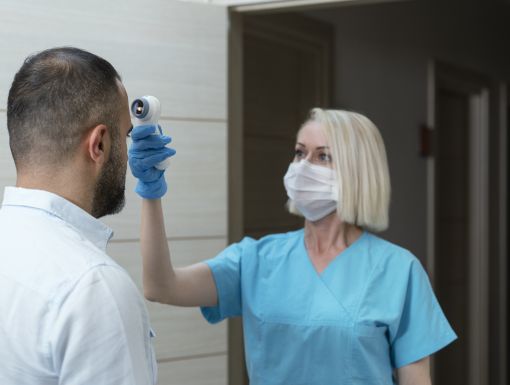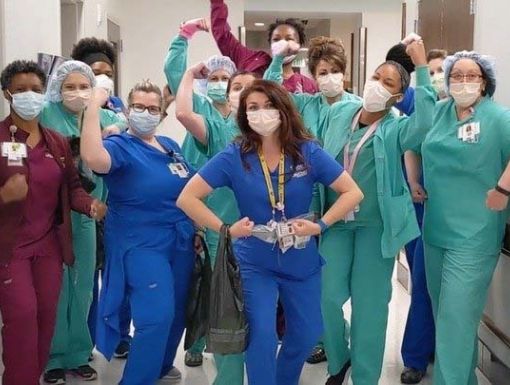
Life After COVID-19 for Medical Providers
We have begun the transition from an initial period of shock following the coronavirus (COVID-19) outbreak to learning to live with the virus's presence in our world. As healthcare providers serving on the front lines of the pandemic, many of us are wondering what life will be like when the country starts to reopen. Will we be able to control the spread of COVID-19 in our communities? How will our day-to-day responsibilities change as we care for our existing patients while also remaining vigilant against the coronavirus threat? It goes without saying that there is a great deal of uncertainty in the "new normal" of life post-COVID-19.
As we look to the future, it's important to acknowledge how difficult the past few months have been and the heroic effort that was required on the part of medical providers to combat this deadly virus. We are an industry of people who have dedicated our lives to helping others. This virus has challenged our strength and perseverance, both individually and collectively. Our successes have been hard-earned, and they have taken a physical and emotional toll on each of us.
But if we've learned anything during this time, it's that we cannot return to business as usual. While no crystal ball can reveal what the months and years ahead will be like, these are the things that will change as a result of the coronavirus pandemic.
Increased Pride in the Work We Do
All of our hard work has not gone unnoticed. Around the world, communities applaud their healthcare and frontline workers every evening as a tribute to the herculean efforts of our medical professionals and support staff. The significance of our work and the importance of a robust and well-supplied healthcare system have never been clearer.
As an industry, the shared sense of purpose and resolve that we feel now will not end once the immediate crisis has passed. Our conviction will inspire the next generation of students to pursue careers in healthcare and related industries. It will also encourage the development of new methods and technologies to help create healthier communities and save more lives.
Additional Support for Healthcare Providers
The crisis has repeatedly proven how vital healthcare workers are to the functioning and survival of our cities and townships. It has also highlighted the resources and support that essential workers need to perform their jobs effectively.
On May 13, 2020, the World Health Organization released a report describing the pandemic's impact on mental health. Mental health and peer-support programs like on-demand counseling, unit-based rounding, and decompression activities are needed to allow clinicians and other frontline staff to process the impact of COVID-19. Other social support services like childcare and transportation will be incorporated into hospital planning to minimize stressors and better support healthcare providers and their families.
Importance of Digital Solutions and Telemedicine
Telemedicine has dramatically increased our capacity to see and treat patients while removing some of the traditional barriers that prevent people from seeking care. Post-COVID-19, it's become a crucial weapon in the fight against the spread of the virus by vastly decreasing the need for in-person appointments. Some healthcare experts estimate that the pandemic has pushed the telemedicine movement forward by at least a decade, if not more.
As patients grow more comfortable with the idea of visiting with a doctor over a digital device, the care we provide can become safer and more efficient. Other strategies, like messaging with providers via encrypted health portals (at Ochsner, we use MyOchsner.org), will become more commonplace.
New Safety Measures to Keep Providers Safe at Work
While telemedicine can do some of the heavy lifting, there will always be a need for in-person medical checkups and appointments requiring a visit to the hospital or clinic. New safety measures will be implemented, including social distancing during appointment check-ins and in the waiting rooms, as well as hand sanitizer, masks and temperature checks upon arrival. We will be cleaning our facilities more often as well as making improvements to the facilities and limiting the number of visitors to protect both our staff and vulnerable/ high-risk patients. The fortunate thing is the public has already adopted many of these habits, and safety protocols will feel familiar especially in a healthcare setting.
Team Care – We Are All in This Together
One of the most amazing things that emerged in response to the coronavirus is how quickly medical providers pivoted to respond to the moment's needs. The challenge of COVID-19 required a team-centric approach, with everyone from doctors and nurses to respiratory therapists, certified nurse anesthetists, and audiologists playing an important role. Advanced practice providers, including nurse practitioners and physician assistants, have all been asked to assume additional responsibilities, and physicians have been redeployed to areas outside of their particular specialty.
Breaking down these traditional professional barriers has contributed to a profound sense of respect for the contributions of all members of the medical team. It's exciting to think of the impact that this remembered sense of fellowship and collaboration will have over the months and years to come.
For the latest updates from Ochsner on COVID-19, visit Ochsner.org/coronavirus
The information in this blog post is accurate at the time of publication. However, as the situation surrounding COVID-19 continues to change, it's possible that information has changed since being published. While Ochsner Health is trying to keep our blog posts as up-to-date as possible, we also encourage readers to stay informed on news and recommendations by using the CDC website.


